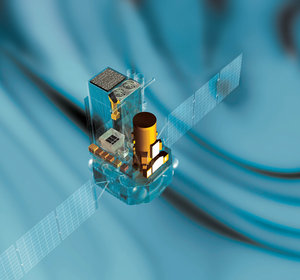Giant black holes
A giant black hole lurks at the centre of most galaxies, including our own Milky Way.
From observations at radio and infrared wavelengths, astronomers know that the heart of our galaxy is a site of violent activity. At gamma-ray energies, its behaviour is even more extreme.
Arching up from the centre of the galaxy is an enormous cloud of antimatter. It is glowing brightly with gamma rays, created as the antimatter annihilates its normal matter counterparts. Integral will pursue this investigation into the astrophysical processes at work near the heart of the Milky Way.
The violence in the centre of some other galaxies can be even more dramatic. Such a place is called an Active Galactic Nucleus (AGN) and there are various types. Regardless of their classification, however, all AGNs emit a wide range of radiation that varies in intensity over timescales ranging from a fraction of a day to several months.
AGN are powered by matter falling into a very massive central black hole. High-energy emission, in the form of gamma rays and X-rays, is generated as the matter swirls around the black hole in a disc, waiting to be pulled inwards. Narrow jets of matter shoot away from the black hole but how these jets are formed and what makes them so narrow is still not understood.
There are AGNs so bright that they outshine their host galaxy. These are known as quasars and are some of the most luminous objects in the Universe. However, they are difficult to observe because most of them are millions of light years away.
Integral is very well-equipped to study these celestial powerhouses, peering into their hearts to unlock the secrets of how they formed.















 Germany
Germany
 Austria
Austria
 Belgium
Belgium
 Denmark
Denmark
 Spain
Spain
 Estonia
Estonia
 Finland
Finland
 France
France
 Greece
Greece
 Hungary
Hungary
 Ireland
Ireland
 Italy
Italy
 Luxembourg
Luxembourg
 Norway
Norway
 The Netherlands
The Netherlands
 Poland
Poland
 Portugal
Portugal
 Czechia
Czechia
 Romania
Romania
 United Kingdom
United Kingdom
 Slovenia
Slovenia
 Sweden
Sweden
 Switzerland
Switzerland





























